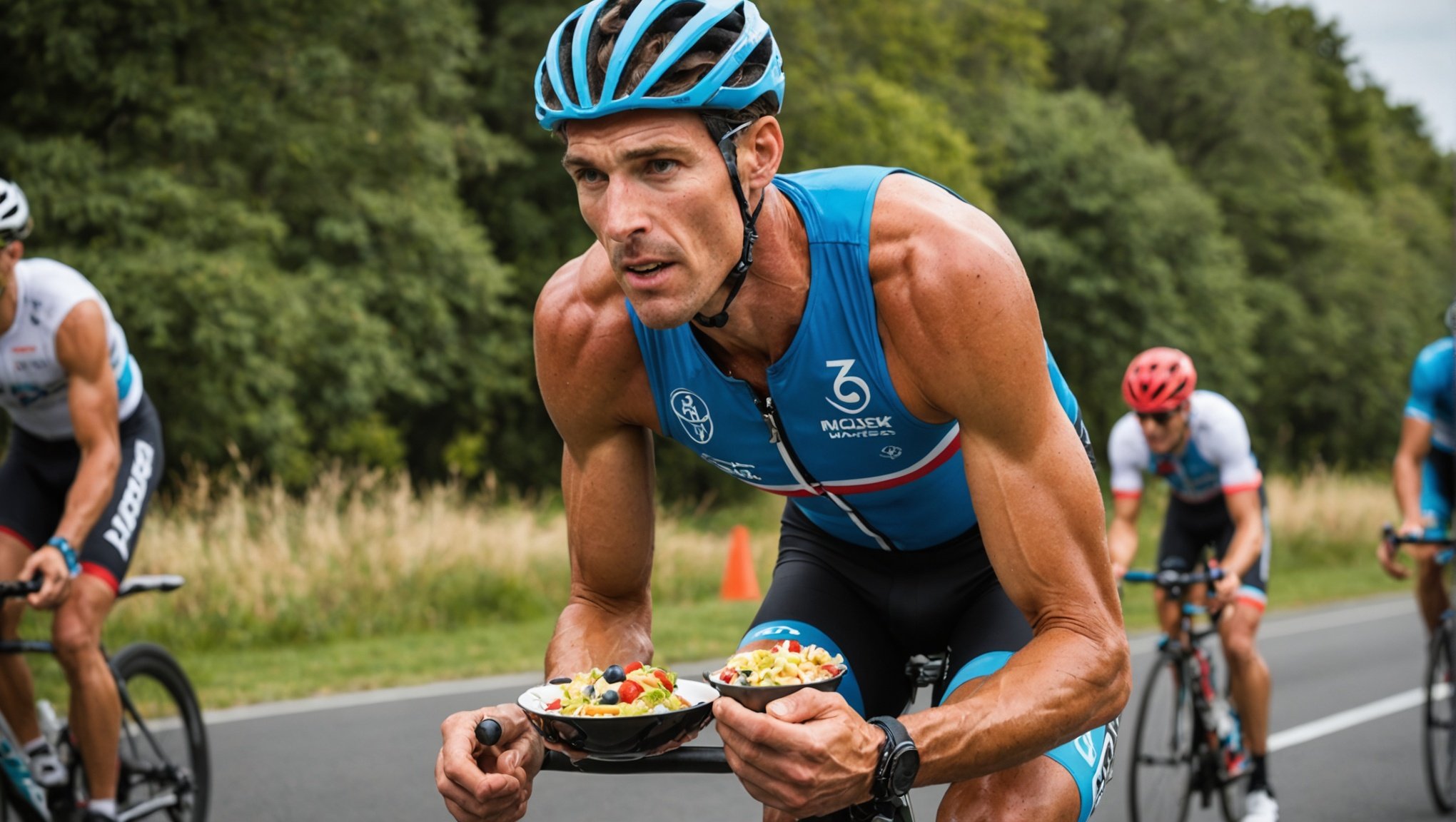Mastering Pre-Race Nutrition: Discover the Ultimate Carb Loading Techniques for Triathletes
When it comes to preparing for a triathlon, one of the most critical aspects is mastering your pre-race nutrition. This involves a careful balance of carbohydrate loading, hydration, and strategic fueling to ensure your body is optimized for peak performance. Here’s a comprehensive guide to help you understand and implement the best carb loading techniques for your next triathlon.
Understanding Carb Loading
Carb loading is a nutritional strategy designed to maximize your body’s glycogen stores, which are the primary energy reserves for endurance activities. Glycogen is stored in your muscles and liver, and it is crucial for maintaining energy levels during long-duration events like triathlons.
Topic to read : Exploring the Latest Advances in CBD for Pain Relief in Contact Sports: Research Insights and Trends
Why Carb Load?
Carb loading is essential because it helps to:
- Maximize Glycogen Stores: By increasing carbohydrate intake, you can store more glycogen in your muscles and liver, providing a sustained energy source during the race.
- Delay Fatigue: Higher glycogen levels can delay the onset of fatigue, allowing you to perform at a higher intensity for longer periods.
- Enhance Performance: Proper carb loading can improve overall performance by ensuring that your body has the necessary energy to complete the event.
Planning Your Carb Loading
Effective carb loading is not just about consuming a lot of carbohydrates; it’s about timing and balance.
Additional reading : Revolutionize Your Run: The Impact of High-Tech Insole Sensors on Running Technique and Injury Prevention
Days Leading Up to the Race
In the days leading up to the race, you should gradually increase your carbohydrate intake. Here’s a general outline:
- 3-4 Days Before: Start increasing your carbohydrate intake to about 2-3 grams of carbohydrates per kilogram of body weight. For example, if you weigh 70 kg, aim for 140-210 grams of carbohydrates per day.
- 2 Days Before: Continue to increase your carbohydrate intake to about 3-4 grams per kilogram of body weight.
- 1 Day Before: Peak your carbohydrate intake at about 4-5 grams per kilogram of body weight.
Example Carb Loading Plan
Here is an example of what a carb loading plan might look like for a 70 kg athlete:
| Day Before Race | Carbohydrate Intake (grams) |
|---|---|
| 3-4 Days Before | 140-210 |
| 2 Days Before | 210-280 |
| 1 Day Before | 280-350 |
Foods to Focus On
When carb loading, focus on complex carbohydrates that are rich in fiber and nutrients. Here are some examples:
- Whole Grains: Brown rice, whole wheat bread, quinoa
- Fruits: Bananas, apples, berries
- Vegetables: Sweet potatoes, broccoli, carrots
- Legumes: Lentils, chickpeas, black beans
- Low-Fat Dairy: Milk, yogurt, cheese
Fine-Tuning Your Race Nutrition Plan
Every athlete is different, and what works for one person may not work for another. Here are some key considerations to fine-tune your race nutrition plan.
Understanding Your Fueling Needs
As Taryn from Dietitian Approved notes, “It’s really about understanding your unique needs and choosing a plan that aligns with that.”[4]
- Carbohydrate Frequency: Determine how often you need to fuel during the race. Some athletes prefer smaller, more frequent intakes, while others can handle larger amounts less often.
- Example: If you need 60 grams of carbohydrates per hour, you might take 30 grams every 30 minutes or 15 grams every 15 minutes.
On-Course Nutrition
Know what nutrition products will be available on the course and plan accordingly.
- Maurten Gels: For Ironman events, Maurten gels are often provided. Check whether they offer Gel 100 or Gel 160 and adjust your plan accordingly[4].
Practical Tips for Race Day
- Hydration: Ensure you are well-hydrated before the race. Monitor your sweat rate during training to understand how much fluid you need to replace.
- Sports Drink: Use a sports drink that contains electrolytes and carbohydrates to help maintain blood sugar levels and hydration.
- Body Weight: Monitor your body weight to ensure you are not overloading on fluids or carbohydrates.
Cognitive and Physical Preparation
Beyond nutrition, mental preparation and physical positioning are crucial for a successful triathlon.
Cognitive Change Techniques
For endurance athletes, managing stress and negative thoughts is vital. Here are some cognitive change techniques:
- Cognitive Reappraisal: Interpret stressful or negative situations in a more positive light. For example, view pre-race nerves as excitement and anticipation[2].
Physical Positioning
Proper physical positioning during the race can also impact performance.
- Bike Positioning: Ensure your bike is set up to optimize your aerodynamic position, reducing wind resistance and conserving energy.
- Running Form: Maintain good running form to reduce the risk of injury and improve efficiency.
Real-Life Examples and Anecdotes
Christine, who is preparing for her first Ironman, shares her journey and the importance of balancing nutrition with a demanding career. She emphasizes the need for a tailored nutrition plan that fits her unique needs and schedule[1].
Table: Comparing Maurten Gel 100 and Gel 160
Here is a comparison of Maurten Gel 100 and Gel 160, two popular race nutrition products:
| Feature | Maurten Gel 100 | Maurten Gel 160 |
|---|---|---|
| Carbohydrate Content | 25 grams per serving | 40 grams per serving |
| Serving Size | 40 ml | 40 ml |
| Electrolytes | Yes | Yes |
| Calories | 100 calories per serving | 160 calories per serving |
| Practicality | Smaller, more frequent intakes | Larger, less frequent intakes |
| Digestive Tolerance | Generally well-tolerated | May be problematic for some athletes |
Detailed Bullet Point List: Key Considerations for Carb Loading
Here are some key considerations to keep in mind when carb loading:
- Timing: Increase carbohydrate intake in the days leading up to the race, peaking the day before.
- Quantity: Aim for 2-5 grams of carbohydrates per kilogram of body weight.
- Type: Focus on complex carbohydrates rich in fiber and nutrients.
- Hydration: Ensure adequate hydration to support carbohydrate absorption.
- Individual Needs: Tailor your plan based on your unique fueling needs and digestive tolerance.
- On-Course Nutrition: Plan according to what will be available on the course.
- Sweat Rate: Monitor your sweat rate to adjust fluid intake.
- Sports Drink: Use a sports drink that contains electrolytes and carbohydrates.
- Body Weight: Monitor body weight to avoid overloading on fluids or carbohydrates.
- Cognitive Preparation: Use cognitive change techniques to manage stress and negative thoughts.
Mastering pre-race nutrition is a critical component of preparing for a triathlon. By understanding the principles of carb loading, fine-tuning your race nutrition plan, and considering both physical and cognitive preparation, you can optimize your performance and achieve your goals.
As Taryn from Dietitian Approved emphasizes, “It’s really about understanding your unique needs and choosing a plan that aligns with that.”[4] With the right approach, you can ensure that your body is fueled for success, ready to tackle the challenges of the triathlon with energy, endurance, and confidence.











